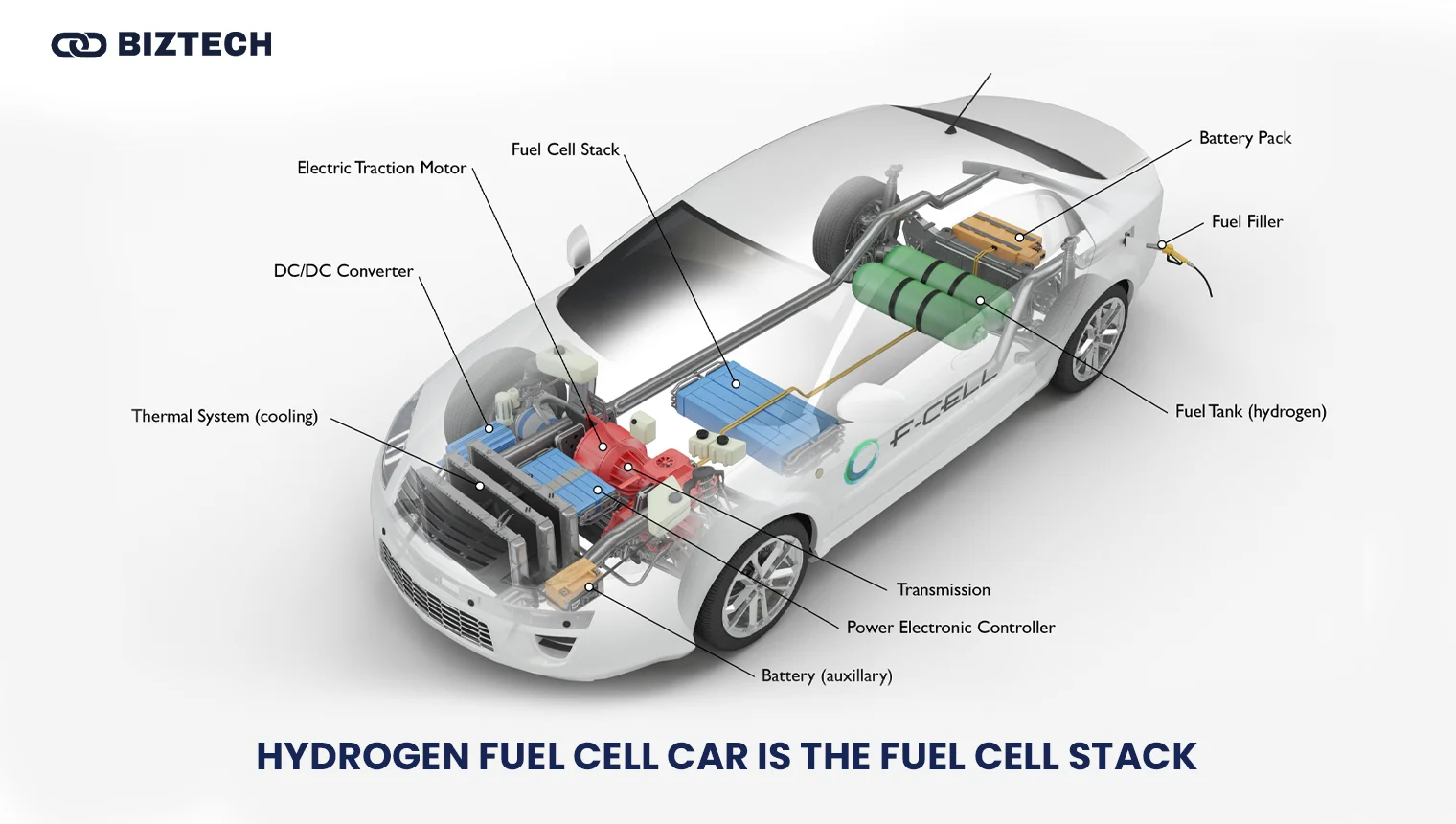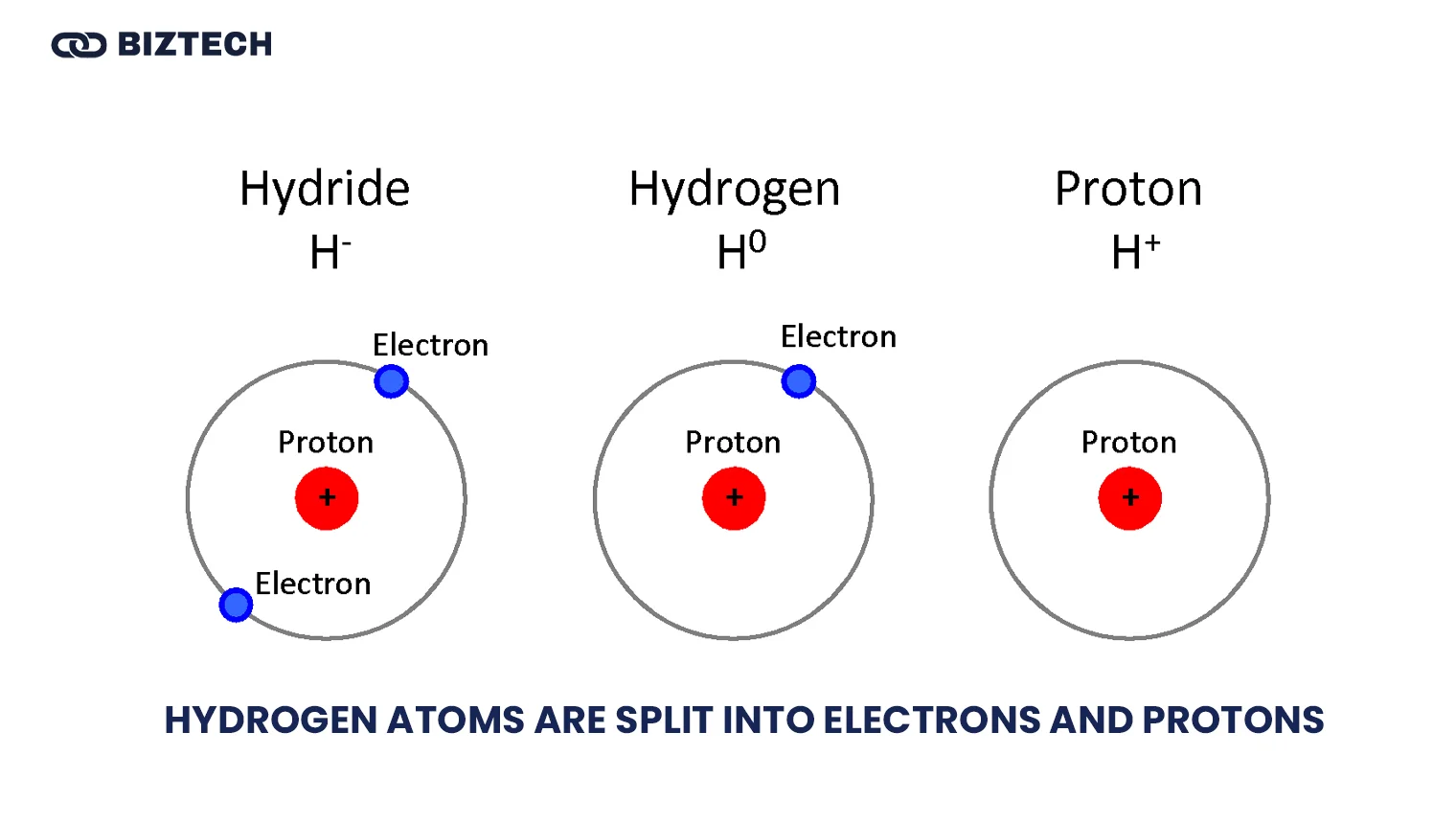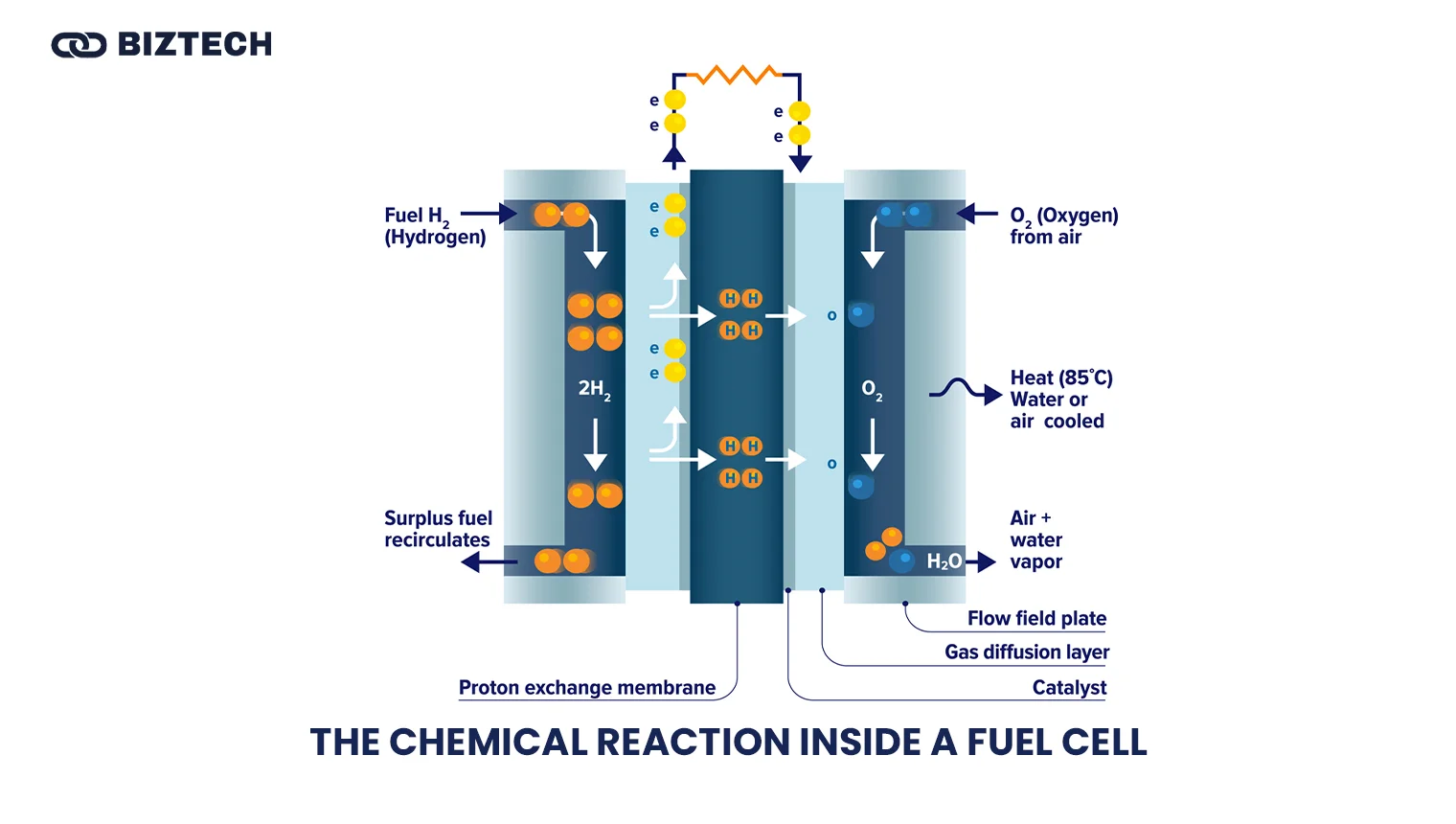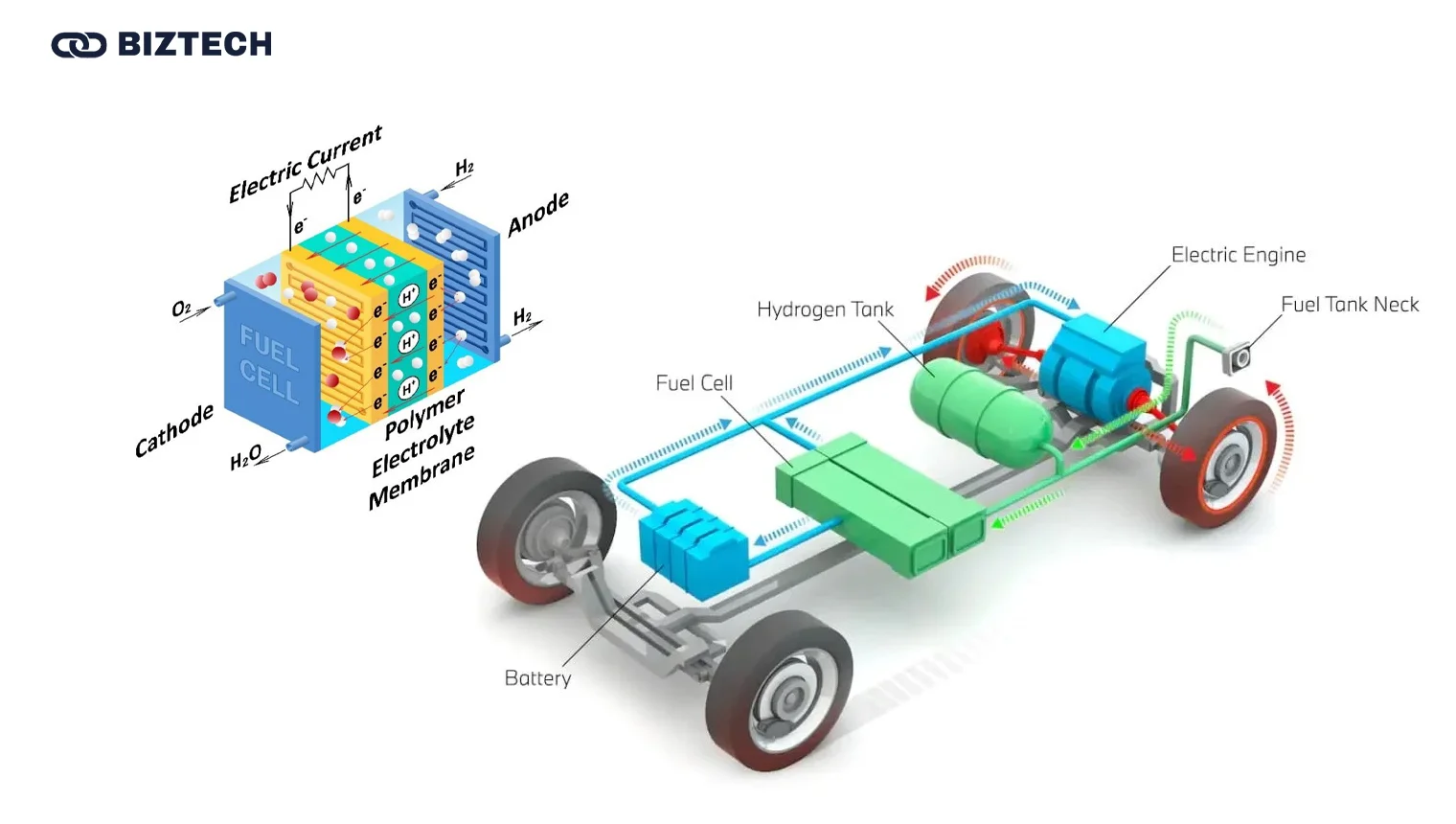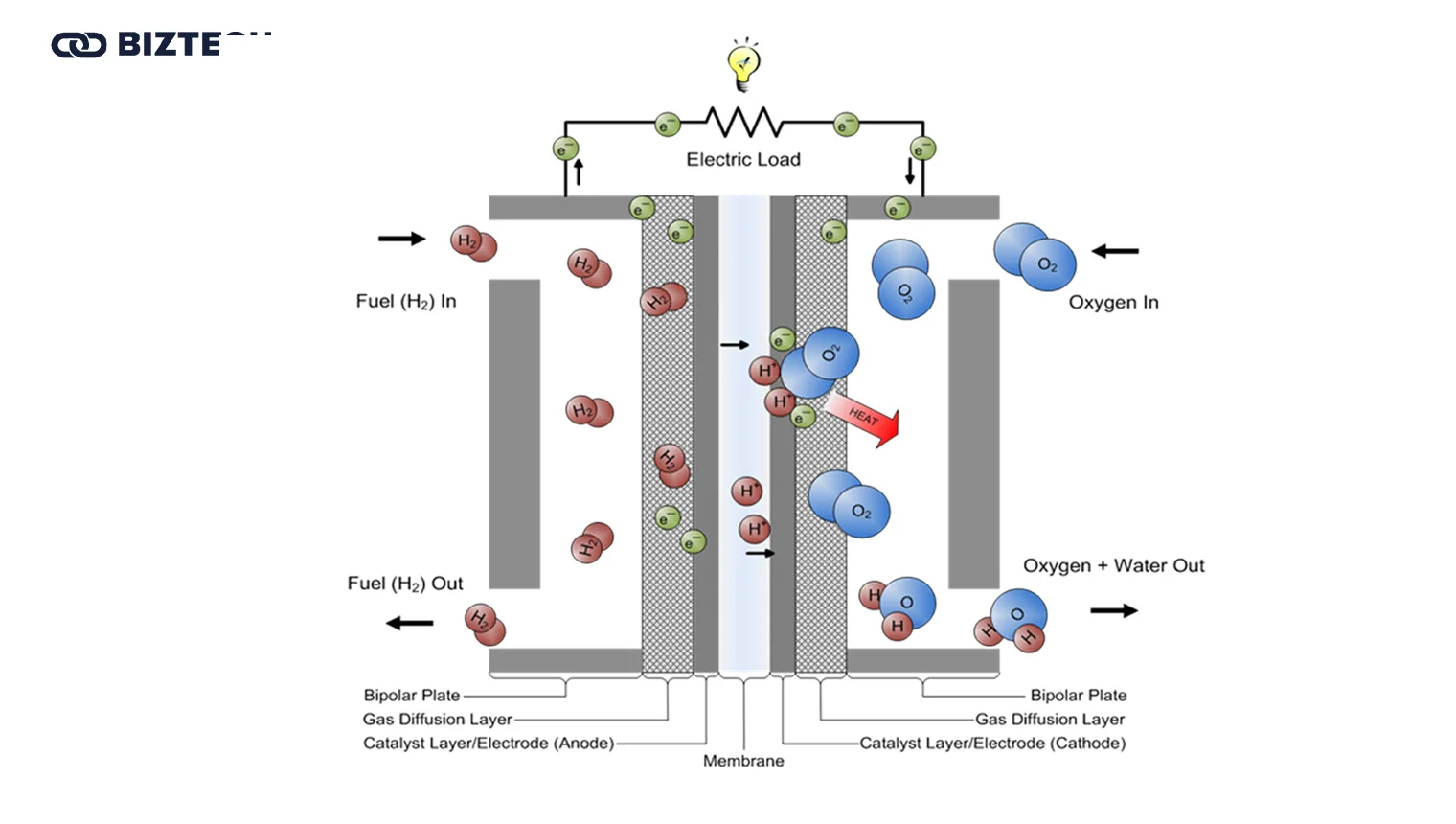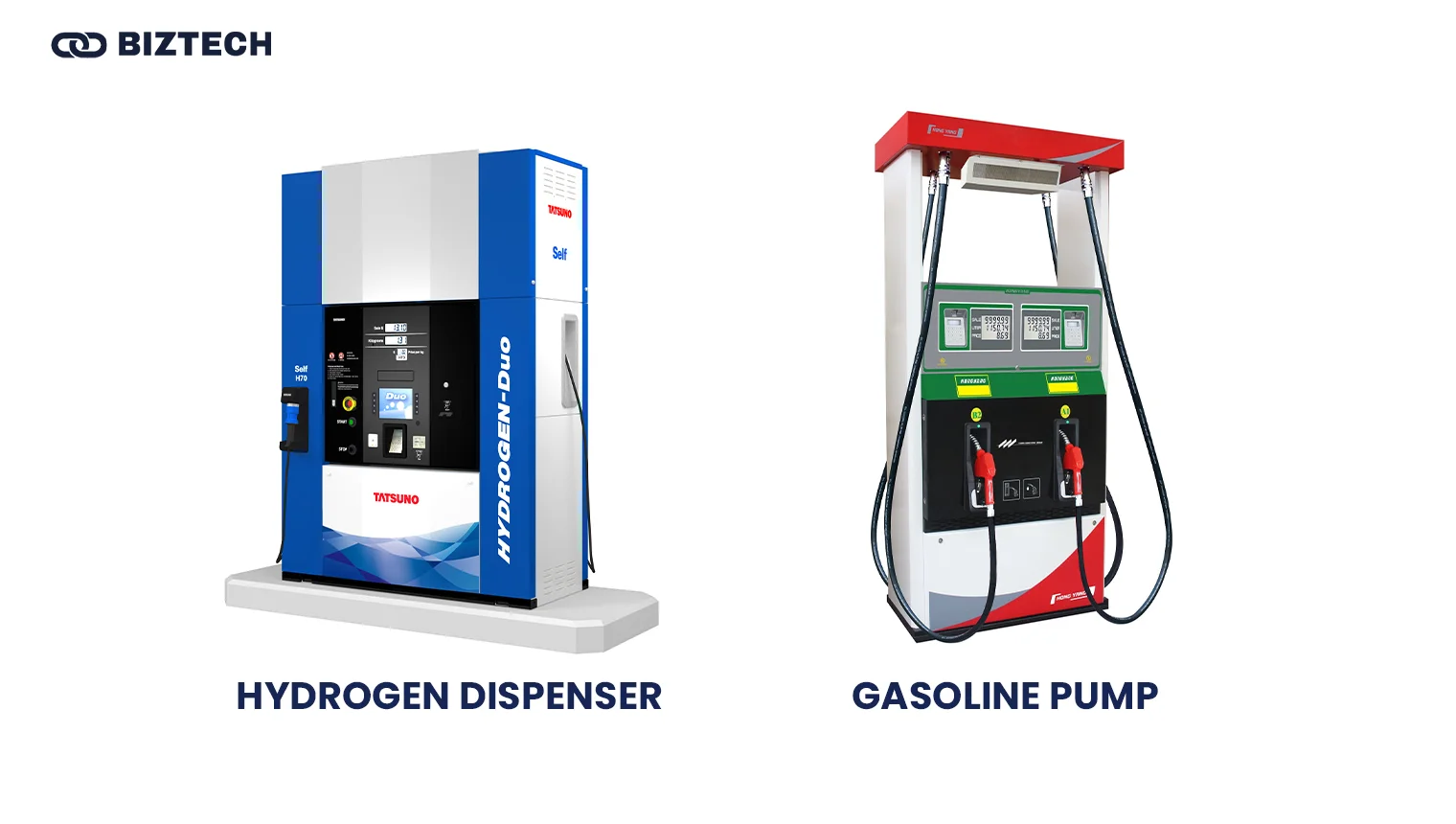Hydrogen fuel cell cars use electricity from their hydrogen fuel cells when they catalyze a reaction involving hydrogen and oxygen. This reaction happens in a device called a fuel cell stack.
Unlike conventional engines that burn fuel, these cells only produce water vapor and heat as byproducts, making them a clean energy source for vehicles.
The concept of fuel cells dates back to the 19th century, but it wasn’t until the space race of the 1960s that they were put to practical use in NASA’s spacecraft.
Today, fuel cell technology has advanced significantly with a push for cleaner energy, finding its way into cars emitting only water.
These advancements have led to the creation of vehicles that can travel as far as traditional cars on a single tank of hydrogen.
With refueling times comparable to gasoline vehicles and no tailpipe emissions, hydrogen fuel cell technology is now seen as a viable alternative for a sustainable transportation future.
Key Takeaways:
1. The hydrogen atom is split into an electron and a proton, and the electron runs through the circuit to generate electricity
2. The electricity is used to generate movements by the wheels.
3. You refuel hydrogen fuel cell cars in a way similar to how you refuel your petrol.
4. The advantages of hydrogen fuel cell cars are energy efficiency and clean.
5. While it may be safe and environmentally friendly, it still has several challenges to overcome in the current market.
Table of Contents
The Core Components of a Hydrogen Fuel Cell Car
The heart of a hydrogen fuel cell car is the fuel cell stack.
This is where hydrogen gas from the car’s fuel tank meets air from the outside. Inside the stack, hydrogen atoms are split into electrons and protons, with the electrons going on to create electricity.
Hydrogen storage tanks in these cars are engineered to be incredibly strong and light. They safely store hydrogen at high pressures, ensuring enough fuel for the car to cover significant distances on a single fill, much like a conventional car’s gas tank.
The electricity generated by the fuel cell stack doesn’t get stored; it’s used immediately by the electric motor that drives the wheels. This motor propels the car forward, and because it runs on electricity, it operates quietly and efficiently, with instant torque available from a standstill.
The Chemical Reaction Inside a Fuel Cell
Inside a fuel cell, hydrogen gas from the car’s tank meets oxygen from the air. This meeting isn’t a fiery explosion like a combustion engine but a quiet, controlled affair.
It happens on the surface of a special material called a catalyst, which encourages hydrogen atoms to split apart.
Once the hydrogen atoms are split, their electrons are freed and flow through circuits in the fuel cell. Electron movement creates the electrical current that lights up homes and energizes cars. It’s harnessed to power the car’s electric motor, turning wheels and making it move.
The leftover parts of the hydrogen atoms, now positively charged, pass through a membrane in the fuel cell to the other side, where they meet up with oxygen. There, they combine to form water, which is the only exhaust from this whole process.
This water vapor and a bit of heat are the only things a hydrogen fuel cell car emits. That starkly contrasts the carbon dioxide and other pollutants that come from traditional gasoline and diesel vehicles.
It’s clean enough that the only trace of a hydrogen car’s passage might be a few drops of water on the road.
How Do Hydrogen Cars Refuel
Refilling a hydrogen vehicle’s tank follows steps similar to the process used for a standard petrol car.
You pull up to a hydrogen dispenser, which, although it looks quite similar to a gasoline pump, is designed specifically for hydrogen. The nozzle locks securely onto the car’s receptacle to create a tight seal.
The pump engages, and hydrogen gas is transferred into the vehicle’s storage tanks. Sensors monitor this process to ensure safety and maintain the correct pressure. Filling a tank typically takes about three to five minutes, comparable to refueling a gasoline car.
Drivers can find hydrogen refueling stations much like they would a gas station, though they are currently less common. The stations are strategically placed in urban areas or along popular routes to support drivers’ typical travel patterns.
Expansion plans for hydrogen refueling infrastructure are ambitious, aiming to increase accessibility.
Governments and private companies are investing in new stations to ensure that drivers can refuel with ease and confidence as more hydrogen cars hit the road.
Advantages of Hydrogen Fuel Cell Vehicles
Hydrogen fuel cell vehicles have a significant advantage in producing zero emissions during operation. Water vapor is the only byproduct released into the atmosphere, making these vehicles incredibly clean compared to traditional gasoline-powered cars.
Energy Efficiency
In terms of energy efficiency, hydrogen fuel cell vehicles excel.
They convert the chemical energy from hydrogen into electrical energy with greater efficiency than the combustion engines in most cars today.
This means they can do more with less fuel, which is good for both the environment and the wallet.
Renewable Energy Sources
Another major benefit is the potential for renewable sources to produce hydrogen.
Hydrogen can be generated using solar or wind power, which means the entire energy supply chain could be sustainable and carbon-neutral.
This offers a vision of a future where cars are powered by the most abundant elements in the universe without contributing to pollution or climate change.
(Read more about the Pros and Cons of Hydrogen Fuel Cell Cars.)
Safety Measures in Hydrogen Fuel Cell Cars
Hydrogen, while an excellent fuel source, is also highly flammable, necessitating robust safety measures in hydrogen fuel cell cars.
Manufacturers have addressed this by designing multiple layers of safety that include sensors to detect any hydrogen leaks and automatic shutoff systems to prevent any potential issues.
The hydrogen tanks in these vehicles are built to withstand severe impacts, heat, and pressure.
They are tested rigorously, going through conditions far beyond what they would normally encounter on the road. This ensures that even in the event of an accident, the risk of a hydrogen leak or fire is minimal.
Compared to conventional vehicles, which carry highly flammable gasoline or diesel, hydrogen cars are subject to equally stringent, if not more rigorous, safety standards.
The industry has developed these standards to ensure that hydrogen fuel cell vehicles are as safe as the cars we’ve been driving for decades.
In addition to passive safety features, active monitoring systems constantly check the health and integrity of the fuel cell system. If a car’s computer system detects any abnormality, it can take immediate action, such as shutting down the fuel cell, to ensure the vehicle’s and its occupants’ safety.
The combination of advanced materials, thorough testing, and real-time monitoring makes hydrogen fuel cell cars a safe option on the road.
As with any new technology, continuous improvements and updates are part of the evolution, enhancing safety as the technology matures and becomes more widespread.
(Read more about how safe hydrogen cars are.)
Economic and Environmental Impact
The cost of hydrogen fuel cell vehicles tends to be higher upfront than traditional fuel and electric vehicles. This is due to the advanced technology and materials required to safely store and use hydrogen as a fuel.
However, running costs can be lower, as hydrogen fuel can be cheaper than gasoline per mile, and maintenance for electric motors is often less for internal combustion engines.
Regarding the environment, hydrogen fuel cell cars stand out for their potential to reduce greenhouse gas emissions.
When the hydrogen they consume is sourced from renewable energy, the vehicles can operate with a minimal carbon footprint. This capability is crucial in the global effort to reduce the effects of climate change.
The adoption of hydrogen fuel cell cars could reduce reliance on fossil fuels. This shift could decrease oil dependency, promoting energy independence and price stability. This strategy may lead to widespread economic gains.
If you are considering purchasing one after reading its benefits, check out our article on the 10 best hydrogen cars.
Future Prospects and Challenges
The road to widespread adoption of hydrogen fuel cell cars isn’t without its bumps.
One of the main challenges is the current lack of refueling infrastructure. Only a handful of hydrogen stations are available, mostly in specific areas, which limits the practicality of owning a hydrogen car.
Another hurdle is the cost of the technology. Fuel cells are expensive to produce, and the high cost is passed on to consumers. This makes hydrogen cars a significant investment compared to more affordable electric and gasoline vehicles.
However, the future holds promise for hydrogen fuel technology. Research is paving the way for cheaper, more durable fuel cells, and methods to produce hydrogen using renewable energy are becoming more efficient. This progress could lead to lower costs and better accessibility for consumers.
Infrastructure is also expected to grow. Plans are in place to increase the number of hydrogen refueling stations, making hydrogen cars a more viable option for many.
As the network expands, the convenience of owning a hydrogen vehicle will increase.
While the obstacles are evident, the dedication to surmount them is just as pronounced. With continued innovation and investment, hydrogen fuel cell cars have the potential to become a common sight on our roads, contributing to a cleaner and more sustainable future.
Conclusion
Hydrogen fuel cell cars represent a fascinating intersection of past innovation and future potential.
The journey from a 19th-century concept to a 21st-century reality reflects a blend of human curiosity and determination. These vehicles are more than just a mode of transportation; they are a statement of where we can go when we harness the power of clean energy.
As we look ahead, the path is lined with anticipation and obstacles.
The expansion of infrastructure, the reduction of costs, and the integration of renewable energy sources are the keys to unlocking the full potential of hydrogen fuel cell vehicles. Progress in this technology represents a move closer to a sustainable interaction with the Earth.
The commitment to a future that embraces hydrogen fuel cell cars is a testament to the ongoing quest for environmental stewardship and innovation. It’s a journey worth taking, with each milestone marked not by combustion exhaust but by the clean water vapor of possibility.

